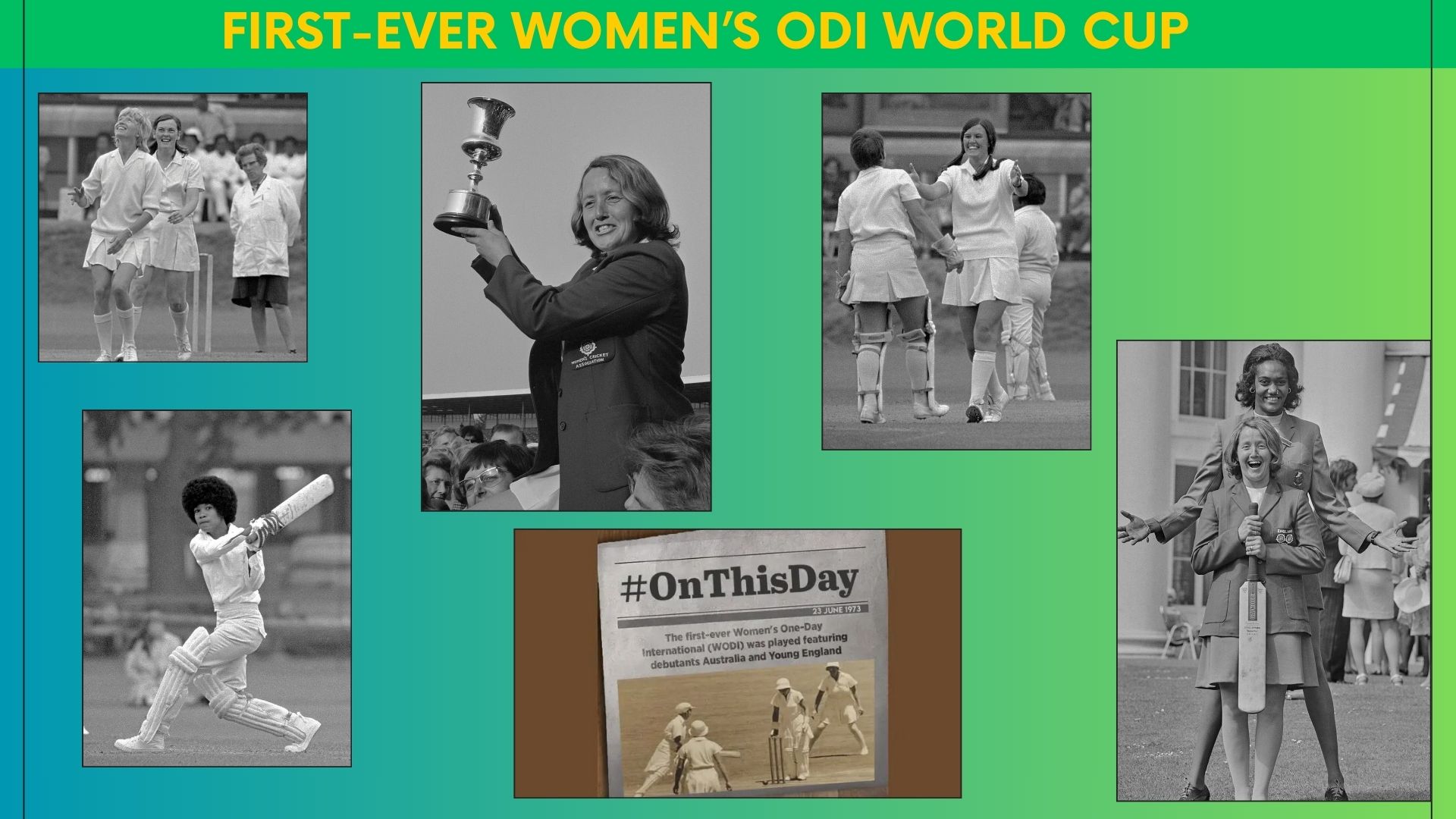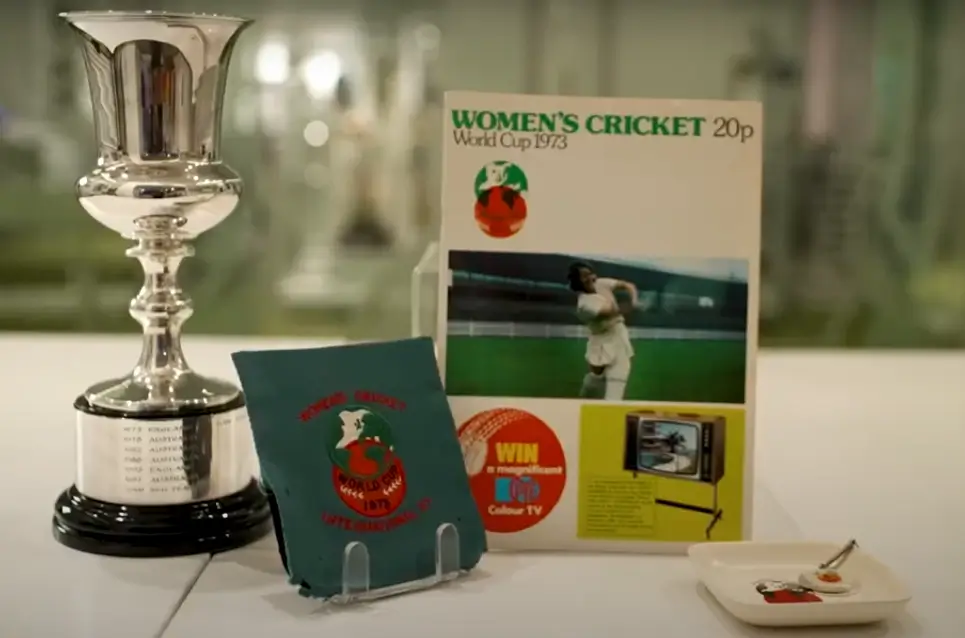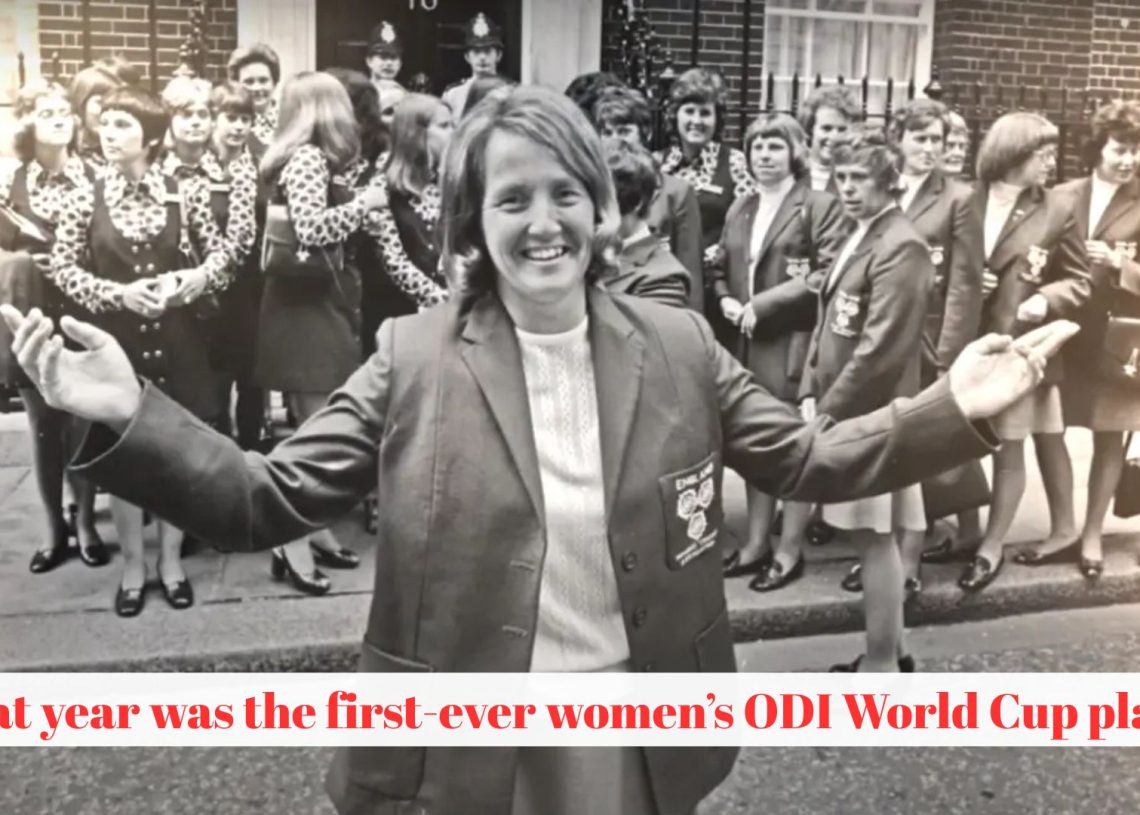The first-ever Women’s ODI World Cup in 1973 marked a pivotal moment in the history of women’s sports. Before this groundbreaking event, women’s cricket had been largely overshadowed by its male counterpart. However, the 1973 Women’s World Cup changed everything by introducing a new era of competition and visibility for women’s cricket.
Hosted in England, this tournament was the start of what would become an iconic event, played every four years. This article takes you through the journey of the first Women’s ODI World Cup, the teams that competed, the winner, and the incredible impact it had on the future of women’s cricket.
What Year Was the First-Ever Women’s ODI World Cup Played?

The inaugural Women’s ODI World Cup took place in 1973, two years before the first Men’s Cricket World Cup. A group of passionate individuals, led by Rachel Heyhoe Flint, the captain of the England women’s team, independently organized the tournament in England. This historic event proved that women could organize and compete in elite-level cricket on their own terms.
Unlike today’s high-profile tournaments, the 1973 World Cup lacked financial backing from major cricket boards. Philanthropists and women’s cricket advocates funded the event. The tournament followed a round-robin format with no knockout stages, and the winner was determined by points after all teams played each other. This simple yet effective approach to the competition set the stage for future editions of the Women’s World Cup.
The Legacy of the 1973 Tournament
The 1973 Women’s ODI World Cup proved that women’s cricket had the potential to attract fans and attention. The competition was a success in terms of participation and the quality of play. It laid the foundation for the Women’s Cricket World Cup as we know it today. This historic event not only gave birth to the competition but also inspired many countries to establish their own women’s cricket programs. This tournament opened doors for future women cricketers to achieve their dreams.
FAQ
Q: What was the format of the 1973 Women’s ODI World Cup?
A: The tournament followed a round-robin format, where each team played against every other team, and the winner was determined by the highest points.
Q: How many teams participated in the 1973 Women’s ODI World Cup?
A: Seven teams participated: England, Australia, New Zealand, Jamaica, Trinidad & Tobago, Young England, and an International XI.
Q: Where was the final of the 1973 Women’s ODI World Cup held?
A: The final match was held at Edgbaston, England.
Q: Who was the top scorer in the 1973 Women’s ODI World Cup?
A: Enid Bakewell from England was the top scorer with 264 runs.
Q: What was the result of the final match in the 1973 Women’s World Cup?
A: England won the final by 92 runs against Australia.
Summary of the 1973 Women’s Cricket World Cup:
| Event | Details |
|---|---|
| Tournament Dates | 20 June to 28 July 1973 |
| Location | England |
| Teams Participating | Australia, England, New Zealand, Jamaica, Trinidad & Tobago, International XI, Young England |
| Tournament Format | Round-robin (each team plays against every other team) |
| Winner | England |
| Runner-up | Australia |
| Final Venue | Edgbaston, England |
| Winning Margin | England won by 92 runs |
| Top Scorer (England) | Enid Bakewell (264 runs, 2 centuries) |
| Other Notable Player (England) | Lynne Thomas (263 runs, highest score 134) |
| Top Scorer (Other Teams) | Paulette Lynch (Jamaica), notable contributions from other teams |
| Significance | First-ever Women’s Cricket World Cup, setting the foundation for future women’s cricket tournaments |
| Captain of Winning Team | Rachel Heyhoe-Flint |
| Sponsorship | GBP 40,000 from Sir Jack Hayward |
| Legacy | The first global women’s cricket event sparked the growth of women’s cricket worldwide |
Above are the key points of the 1973 Women’s Cricket World Cup, highlighting the teams, performance, and significance of the tournament.
Who Won the First Women’s ODI World Cup?

The 1973 Women’s World Cup was won by England, led by Rachel Heyhoe Flint. The English team showed remarkable consistency throughout the round-robin tournament, winning five of their six matches. Their strong performance, particularly in the match against Australia, secured them the title.
England’s win was historic, as it was the first-ever Women’s World Cup. The victory marked the beginning of what would become a long-standing rivalry between England and Australia in women’s cricket. England’s performance in the 1973 tournament helped establish them as a dominant force in the early years of women’s cricket.
Key Players and Performances
One of the standout players from the tournament was Enid Bakewell from England. She scored an impressive 264 runs and took 10 wickets during the tournament, earning her a reputation as one of the most versatile players of the event. Rachel Heyhoe Flint, the captain, was also a key contributor to England’s success, both with the bat and as a strategic leader.
Has India Won the Women’s ODI World Cup?
Although India has come close, they have never won the Women’s ODI World Cup. India first participated in the tournament in 1978, and since then, they have reached the final twice—in 2005 and 2017. In 2005, India lost to Australia by 98 runs, and in 2017, they lost by just 9 runs to England in a thrilling final.
Despite not winning, India’s performance in these tournaments has been remarkable, showing the growing strength of the Indian women’s cricket team. India’s journey in the Women’s World Cup has been a testament to their perseverance and the increasing competitiveness of women’s cricket in the country.
What Year Was the Women’s First World Cup?
The Pehla (First) Women’s ODI World Cup was held in 1973 in England. This event was revolutionary, paving the way for future women’s international competitions in various sports. Rachel Heyhoe Flint, who was the captain of the England women’s cricket team, played a key role in organizing and promoting this event.
The tournament saw the participation of seven teams: England, Australia, New Zealand, Jamaica, Trinidad & Tobago, an International XI, and Young England. These teams competed in a round-robin format, with no knockout stages. England emerged victorious, becoming the inaugural champions of the Women’s ODI World Cup.
The Evolution of the Women’s Cricket World Cup From 1973 to Today
Since its first edition in 1973, the Women’s ODI World Cup has grown significantly. The tournament has expanded, with more teams joining, and the format has evolved to accommodate the growing interest and competition in women’s cricket. The World Cup now regularly attracts large audiences and receives global media coverage, something that was unimaginable back in 1973.
The competition, originally an independent initiative, is now governed by the International Cricket Council (ICC). The success of the Women’s World Cup has played a major role in the increasing visibility of women’s cricket and has inspired future generations of female cricketers.
Conclusion
The 1973 Women’s ODI World Cup is a landmark in the history of cricket and women’s sports. It marked the beginning of an era where women’s cricket gained international recognition and a platform to showcase their talent. Despite the challenges faced by the pioneers of this event, such as a lack of funding and media attention, the tournament paved the way for the modern-day Women’s World Cup.
Today, women cricketers around the world continue to build on the legacy of the 1973 World Cup, and the competition remains one of the most prestigious events in the sport.
The success of the Women’s ODI World Cup serves as a reminder of how far women’s cricket has come and the importance of continuing to support and grow the sport at all levels.




